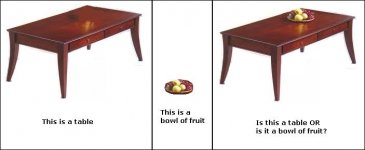DC is "courant continu".
AC is "courant alternatif".
Nice.
The question is what are the French scientific definitions of those terms?
Oh, one could always use the definitions of IEC 60050-131:
direct current: electric current that is time-independent or, by extension, periodic current the direct component of which is of primary importance
direct voltage or direct tension: voltage that is time-independent or, by extension, periodic voltage the direct component of which is of primary importance
alternating current: electric current that is a periodic function of time with a zero direct component or, by extension, a negligible direct component
alternating voltage or alternating tension: voltage that is a periodic function of time with a zero direct component or, by extension, a negligible direct component
You'll find the French translations in the bilingual document.
direct current: electric current that is time-independent or, by extension, periodic current the direct component of which is of primary importance
direct voltage or direct tension: voltage that is time-independent or, by extension, periodic voltage the direct component of which is of primary importance
alternating current: electric current that is a periodic function of time with a zero direct component or, by extension, a negligible direct component
alternating voltage or alternating tension: voltage that is a periodic function of time with a zero direct component or, by extension, a negligible direct component
You'll find the French translations in the bilingual document.
Something to think about:
Ceci n'est pas une pipe.
I stated that current flow in one direction is DC.
This is where you stray. You can quote me 500 articles from the internet or published books, and this simple sentence that you are desperately holding on to is why you fail to understand superposition.
You state an incorrect definition, and then insist it be true, because you read it somewhere. Get it?
Study superposition.
Something to think about:
Let's see; the first one is MOSTLY a table, though it does have a reflection of fruit and the shadow of a bowl on it.
The second one is MOSTLY a bowl of fruit. Some table artifacts may be present...
The third one has important characteristics of both a bowl of fruit AND a table.
Conclusion: I'm hungry too!
This is where you stray. You can quote me 500 articles from the internet or published books, and this simple sentence that you are desperately holding on to is why you fail to understand superposition.
You state an incorrect definition, and then insist it be true, because you read it somewhere. Get it?
You actually made me laugh with this post.
Lets throw out all the books and definitions of mankind because zigzagflux doesn't like it.
Study superposition.
Actually, if I use your logic then I shouldn't study anything like books and definitions are incorrect.
So Lets look at Superposition Theorem
"The superposition theorem for electrical circuits states that the response (Voltage or Current) in any branch of a bilateral linear circuit having more than one independent source equals the algebraic sum of the responses caused by each independent source acting alone, while all other independent sources are replaced by their internal impedances."
I have read it and understand it! Do you?
Explain how this theorem disproves the definition of DC being current flowing in one direction, and AC current being current alternating its current direction (polarity)!
The fact that you posted this as proof that the definitions of are wrong only show your lack of understanding.
I would suggest you study superposition theorem for DC circuit, and superposition theorem for AC. You should then read NEETS module 1 direct current, then NEETS module 2 alternating current.
I'm hungry, may I eat the fruits ?
I'm hungry too!
Attachments
Let's start over.
However the "oscillating DC" is equivalent to AC superimposed on DC.
It is possible to separate the AC component from the DC component e.g. with a capacitor.
YesIf current can only flow from the cathode to the plate, then the increased signal off the plate must be an oscillating DC current.
YesIn AC the movement of electric charge periodically reverses direction.
YesAs the current can't reverse direction through the triode it must only be DC.
That's not possible.My question is what is the current flow that would allow an AC input signal to the grid to become an increased AC current from the plate.
However the "oscillating DC" is equivalent to AC superimposed on DC.
It is possible to separate the AC component from the DC component e.g. with a capacitor.
jow,
Move on from the term oscillation as it is misleading you.
The AC voltage 'input' signal applied to the grid modulates the DC current flowing through the tube. While being modulated that current has the features of AC current. It does not actually flow in the opposite direction at any time, so instead of thinking of the AC as push / pull, think of it as push-more-hard / push-less-hard, with a null point in the middle of the push.

Move on from the term oscillation as it is misleading you.
The AC voltage 'input' signal applied to the grid modulates the DC current flowing through the tube. While being modulated that current has the features of AC current. It does not actually flow in the opposite direction at any time, so instead of thinking of the AC as push / pull, think of it as push-more-hard / push-less-hard, with a null point in the middle of the push.
Thank you for the reply. I understand everything you stated. My confusion is the types of current being used.
1. Is the signal being applied the the grid AC or oscillating DC?
2. If an AC signal is applied to the grid does it not produce an oscillating DC?
3. If oscillating DC is produced then preamp like 12AX7 would provide DC to the grid of the main tube.
I hope this clarifies where I am get confused
Jason
One thing, maybe you left out. YOU get to define "zero". Say you have a sine wave with 3V at the peak and 1V at the bottom. You would call that the 2V peak to peak AC signal with a 2V DC bias or "off set".
Also remember that a capacitor will block any DC bias. If you tie the output side of the cap to ground through a (say) 1M resistor you have removed the 2V bias.
Transformers also can't pass any DC bias.
The best way to think about EVERY signal and EVERY wires is that they contain both an AC and DC component. Even your power supply has maybe a 300V DC part with a 1mV 120Hz AC component.
It's a pretty powerful and well used technique to think of a signal as the sum of a set of component signals. Once you do then concepts like "oscillating DC" just disappear
jow,
Move on from the term oscillation as it is misleading you.
The AC voltage 'input' signal applied to the grid modulates the DC current flowing through the tube. While being modulated that current has the features of AC current. It does not actually flow in the opposite direction at any time, so instead of thinking of the AC as push / pull, think of it as push-more-hard / push-less-hard, with a null point in the middle of the push.

I agree with all that you stated. I have no misunderstanding regarding the current flow through a triode. It is important to realize that the there is a very real difference ( from a current flow stand point ) between oscillating DC voltage and alternating current. When we understand that alternating current reverse its polarity there by causing current to flow in alternating directions we can see the no AC component can exits from the plate as as by definition polarity cannot reverse through the triode.
No. There is a capacitor between the plate of the 12AX7 and the grid of the main tube. Oscillating DC at the plate of the 12AX7 causes AC at the grid of the main tube.3. If oscillating DC is produced then preamp like 12AX7 would provide DC to the grid of the main tube.
Lets throw out all the books and definitions of mankind because zigzagflux doesn't like it.
Not ALL the books- just the ones with wrong information. You believe everything you read on the internet? You need to ask yourself how to gauge which information to believe and which to reject. If you don't have the understanding in this subject matter, then you are incapable of correctly selecting which information to believe.
Actually, if I use your logic then I shouldn't study anything like books and definitions are incorrect.
If you use any logic at all you would realize that in a tube amplifier, you put AC in and get (amplified) AC out. But your argument is that the triode cannot deal with AC since there is no polarity inversion. Therefore, your logic says the amplifier doesn't work. Well done. Now you can choose to believe this, or realize one of your initial assumptions was wrong.
Explain how this theorem disproves the definition of DC being current flowing in one direction, and AC current being current alternating its current direction (polarity)!
Sure: see the attachment from RCA's Radiotron Designer's Handbook. You will see your half-wave rectifier on the first page, and its Fourier expansion (this is the mathematical representation of superposition to us degreed electrical engineers). The first term E/pi*1 is the DC component. Note how it is a constant. Not "just positive" or "in one direction", but a constant, static, unchanging term. DC is not defined by being "above the x-axis", it is defined by a constant number that does not change with time. People have tried to explain this in layman's terms but you have rejected it. Now you have the mathematical proof, and you have the freedom to accept or reject it- use whatever logic you feel appropriate.
All the other terms are individual AC components- see the cosine terms? To make you happy, I believe you would agree that cosine terms go positive AND negative about the zero axis- yes, that's right, current in BOTH directions with cosine terms. That is AC. No question.
So that completely describes the superposition of your half-wave rectifier, which is NOT just DC, but a combination of both AC and DC. Therefore your insistence that DC only flows in one direction is incorrect. If it was correct, you would have to explain how those cosine terms classify as DC. Good luck with that.
The fact that you posted this as proof that the definitions are wrong only show your lack of understanding.
Thank you for setting me straight. At least you understand, and that's all that matters.
Attachments
Guys, why are you feeding the troll?
Because we are hungry. As soon as it is mature enough, we'll eat it.
I'm hungry, may I eat the fruits ?
Let's see; the first one is MOSTLY a table, though it does have a reflection of fruit and the shadow of a bowl on it.
The second one is MOSTLY a bowl of fruit. Some table artifacts may be present...
The third one has important characteristics of both a bowl of fruit AND a table.
Conclusion: I'm hungry too!
- Status
- Not open for further replies.
- Home
- Amplifiers
- Tubes / Valves
- Triodes and current flow

